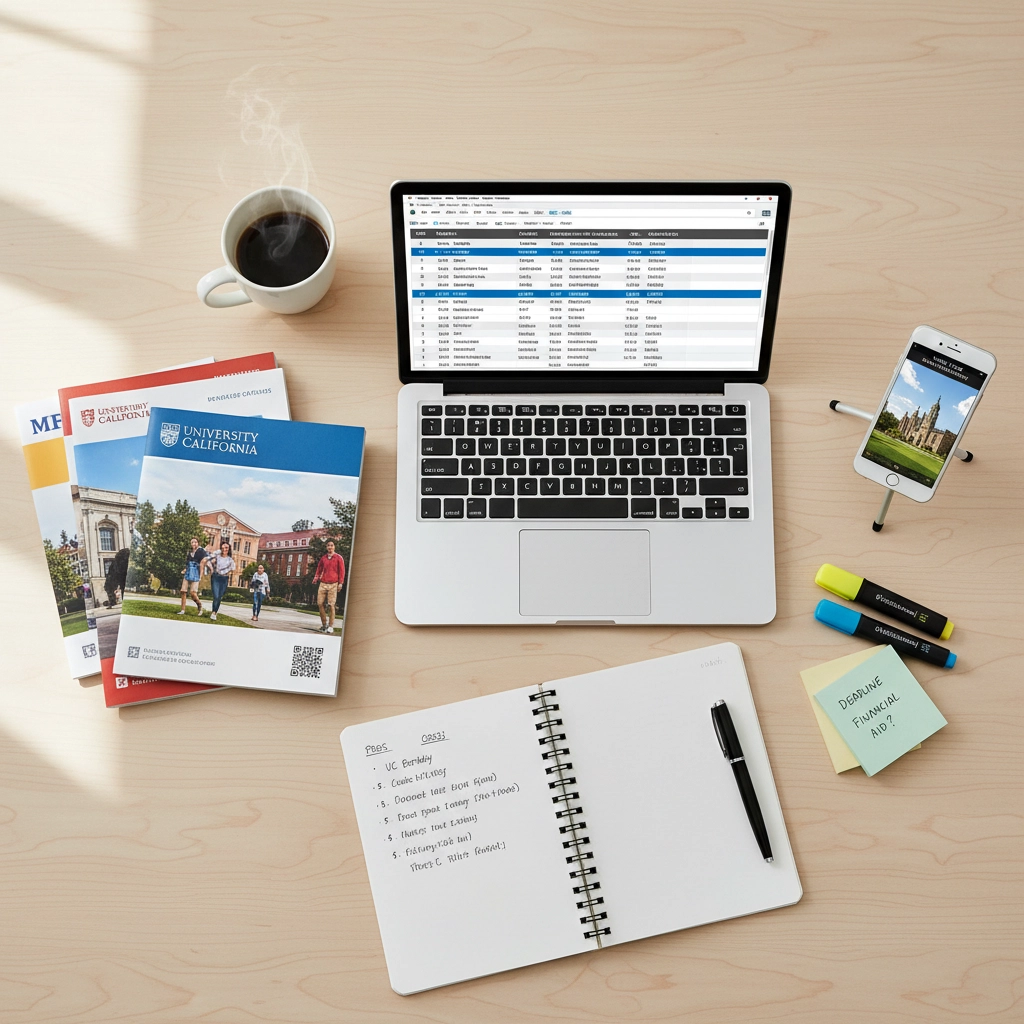Every year, thousands of student-athletes chase prestigious "dream schools" based on emotion, tradition, or social media hype: only to end up sitting on benches, struggling academically, or transferring within two years. The harsh reality? Most recruiting failures happen because athletes pick schools with their hearts instead of their heads.
Smart student-athletes in 2025 are taking a different approach. They're using cold, hard data to find programs where they'll actually play, graduate, and thrive. Here's exactly how to do it.
Step 1: Run the Numbers on Your Academic Eligibility
Before you even start building a college list, you need to know where you stand academically. Not your overall GPA: your NCAA core course GPA.
Here's what most families don't realize: You must complete 16 approved NCAA core courses during high school, and your core course GPA determines your eligibility. Surprisingly, 25% of college student-athletes fail to meet NCAA academic minimums, including many with 3.5+ GPAs who took the wrong courses.
Your NCAA core courses must include:
4 years of English
3 years of math (Algebra 1 or higher)
2 years of natural science (including 1 lab science)
1 additional year of English, math, or natural science
2 years of social science
4 additional core courses from any area above or foreign language, philosophy, or comparative religion
For Division 1, you need a sliding scale GPA that corresponds with your test scores. Division 2 requires a minimum 2.2 core course GPA. Division 3 schools set their own academic standards.
Action item: Calculate your current core course GPA using only approved courses. If you're below requirements, work with your counselor to map out remaining courses needed.

Step 2: Mine Common Data Sets for Academic Reality Checks
Stop guessing whether you'll survive academically at a school. Every college publishes detailed statistics about their admitted students: you just need to know where to look.
Search for "[School Name] common data set" to access hard data about:
Average GPA of admitted students
Test score ranges (25th-75th percentile)
Class rank distributions
Retention rates
Graduation rates
Platforms like CollegeProspector.com aggregate much of this data, making it easier to compare multiple schools quickly. Look for schools where your academic credentials fall within the middle 50% range of admitted students.
The retention rate test: The national average retention rate is 81%. Schools significantly below this indicate students are struggling academically or socially. Higher retention rates suggest the institution effectively supports students through graduation: which matters more than prestige when you're balancing 20+ hours of athletics per week.
An academic best-fit school is where your GPA, course rigor, and test scores match typical admission statistics. You should aim for at least 10 academic best-fit programs on your initial list.
Step 3: Assess Your Athletic Positioning Without Rose-Colored Glasses
This is where most student-athletes go wrong. They fall in love with a program's facilities, tradition, or social media presence without honestly evaluating where they stand in that coach's recruiting priorities.
Athletic best-fit criteria:
The coach considers you among their top 3-5 recruits for your class
You're likely to receive significant playing time as a freshman or sophomore
The coaching staff actively pursues you with personal calls and texts
You receive invitations for unofficial or official visits
The coach advocates for your application in the admissions process
At athletic reach programs, you're not among the top recruits. Student-athletes at reach programs frequently experience lack of playing time, feel consistently overlooked, and ultimately transfer or quit. While Division 1 programs get the headlines, Division 2, Division 3, NAIA, and junior colleges often provide better athletic fits where you'll actually compete and develop.
Reality check questions:
How often does this coach text or call you personally?
Where do you rank in their recruiting class based on verbal communication?
Have they offered you a scholarship or strongly indicated one is coming?
Do your athletic times/stats rank in the top half of their current roster?

Step 4: Evaluate Program Health and Stability
Your athletic career depends on more than just your talent: the program's trajectory, coaching stability, and competitive level all impact your experience.
Key data points to research:
Coaching staff tenure (frequent turnover is a red flag)
Team's competitive history over the last 3-5 years
Graduation rates for student-athletes in your sport
Transfer portal activity (high outbound transfers indicate problems)
Facilities and resources compared to conference competitors
Academic support services specifically for athletes
Look beyond the glossy recruiting materials. Talk to current and former players if possible. Check local newspaper coverage for insights into program culture and recent developments.
Resources like CollegeProspector.com often include program-specific data that helps you evaluate these factors objectively rather than relying on recruiting pitches.
Step 5: Build a Data-Driven, Balanced College List
Now comes the strategic part: organizing your research into a balanced list that maximizes your chances of finding the right fit.
Create three categories:
Athletic Reach Schools (20% of your list): Programs where you're not in their top recruits but could potentially walk-on or earn a spot through exceptional development. Apply to 2-3 maximum.
Athletic Fit Schools (50% of your list): Programs actively recruiting you as a top prospect. You should have substantial communication with coaches and realistic scholarship potential. These schools should also meet your academic standards.
Academic Fit Schools (30% of your list): Programs where your academic credentials match admitted student profiles, even if athletics is less certain. Include options across all division levels.
Essential evaluation criteria for each school:
Academic requirements and support services
Geographic location and family access
Total cost of attendance vs. potential aid
Campus culture and social environment
Career services and alumni networks
Graduation rates in your intended major
Pro tip: Use a spreadsheet to track each school's data points. Include columns for coach communication frequency, academic fit percentage, total costs, and personal visit dates. This removes emotion from decision-making when offers start coming in.

The Transfer Portal Reality Check
With transfer portal activity at all-time highs, your first college choice carries more weight than ever. NCAA rule changes around transfer eligibility mean you might only get one "free" transfer during your career.
Students who choose schools based on data rather than emotion show significantly lower transfer rates. They're more likely to graduate, maintain higher GPAs, and report greater satisfaction with their college experience.
Taking Action on Your Research
Data without action is just information. Once you've identified your target schools:
Prioritize communication with coaches at athletic fit schools
Schedule visits to your top 5-7 programs across all categories
Apply early to academic fit schools to maximize scholarship consideration
Maintain backup options throughout the recruiting process
Document everything in your recruiting spreadsheet for easy comparison
Remember, the "perfect" school exists in the overlap between academic fit, athletic opportunity, and personal preferences: not in the rankings or your childhood fantasies.
The most successful student-athletes use platforms like Recruit My Game to organize their recruiting process, track coach communications, and present their academic-athletic profile professionally to college programs.
Your college choice will impact the next four years of your life and beyond. Make it count by choosing with your head, not your heart.


